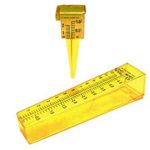



The very early outlook from the Climate Prediction Center is indicating an Ohio valley winter which could be, overall and on average, wet (or snowy) and normal to mild. Overall, it looks cooler and wetter than last winter in the Ohio valley.




The very early outlook from the Climate Prediction Center is indicating an Ohio valley winter which could be, overall and on average, wet (or snowy) and normal to mild. Overall, it looks cooler and wetter than last winter in the Ohio valley.
Station Number: OH-HM-24
Station Name: Cheviot 3.4 W
Report Date: 9/12/2020
Submitted: 9/12/2020 6:12 AM
Scale Bar: Near Normal
Description:
No measurable rain in the last 8 days but 0.70 inches of rain in September. Soil is getting increasingly dry but lawn is still growing like it’s spring here. Some south facing slopes are beginning to show some drought stress but in general lawns here remain green and lush. Pretty normal for early meteorological fall. My location did pick up 1.87 inches of rain from a pretty isolated thunderstorm in late August greatly increasing soil moisture here. Many areas nearby did not get that rain and are quite dry.
Categories:
General Awareness
Agriculture
Business & Industry
Plants & Wildlife
Society & Public Health

–
This report is specifically for the Arbor Doctor’s location 3.4 miles west of Cheviot, OH, in the western suburbs of Cincinnati in southwest Ohio. This location is also an official cooperative observation site for the National Weather Service listed as Cheviot 3W.
What is the Condition Monitoring Report? See these links for more information:
–



–


Water once per week, one inch per week, under the entire branch spread, in the absence of rain, May through November. Either rainfall or your watering should equal the one inch per week. Put out a sprinkler and a straight sided soup can or rain gauge and measure one inch per week.




You may have noticed that Arbor Doctor, meteorologists and climatologists define seasons differently from “regular” or astronomical spring, summer, fall, and winter. So, why do meteorological and astronomical seasons begin and end at different times? Climatologically, the period July 14-21, the mid-point of meteorological summer, is the hottest week of the year and the period January 14-21, the mid-point of meteorological winter, is the coldest week of the year over much of the continental US including the Ohio valley.
